The robin is a magnificent migrating songbird that many think heralds the arrival of spring. Robins are widespread in Europe and North America and flourish in a wide variety of habitats. In this article, we will explore 3 subtle yet noteworthy differences between the male and female American Robin. We’ll show you what to look for so you can swiftly determine the gender of a wild robin anytime you come across one.
Male vs Female Robin: A Comparison
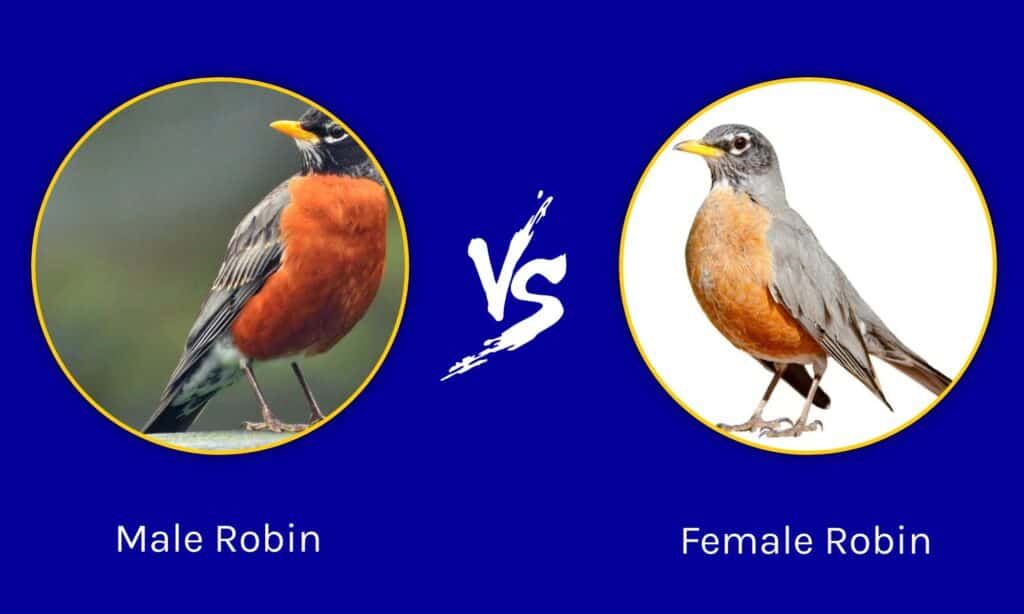
| Key Differences | Male Robin | Female Robin |
| Size | 25 cm; 3 oz | 25 cm; 2.6 oz |
| Colors | Dark Black, Bright Red, Vivid | Charcoal, Orange, Dull |
| Temperament | Territorial, Hunter | Nester, Builder |
Key Differences Between Male vs Female Robin
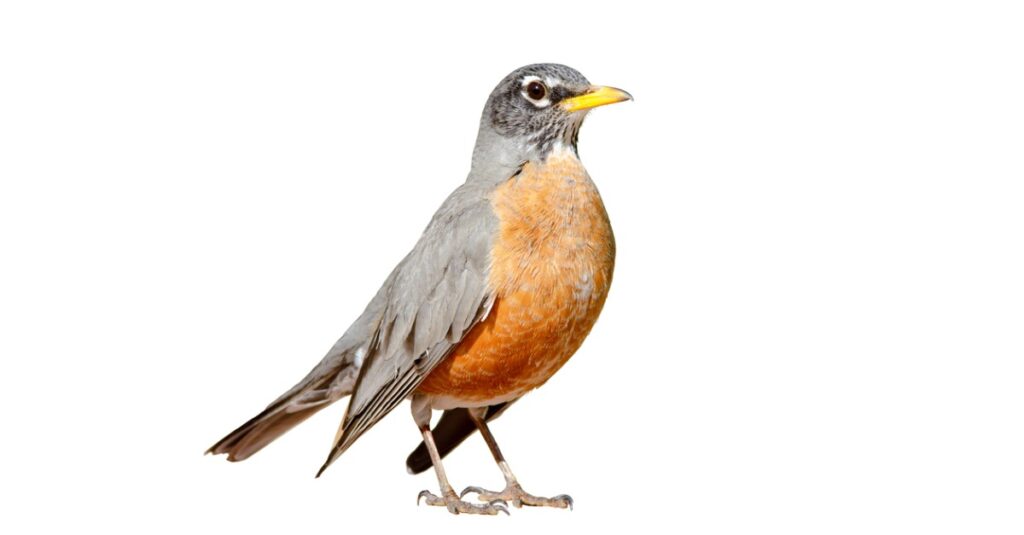
The female Robin is more washed out in color than her male counterpart.
©iStock.com/spates
The key difference between a male robin and a female robin is that male robins are a darker color while females have duller coloration in comparison. Friendly songbirds, American robins are naturally drawn to regions where people live. The grass provides an excellent feeding ground for earthworms, and your home provides a haven for them to lay their eggs. But for those interested in bird watching, how can you tell them apart? Although very subtle, you can spot other differences if you watch them closely. Let’s explore further!
Appearance
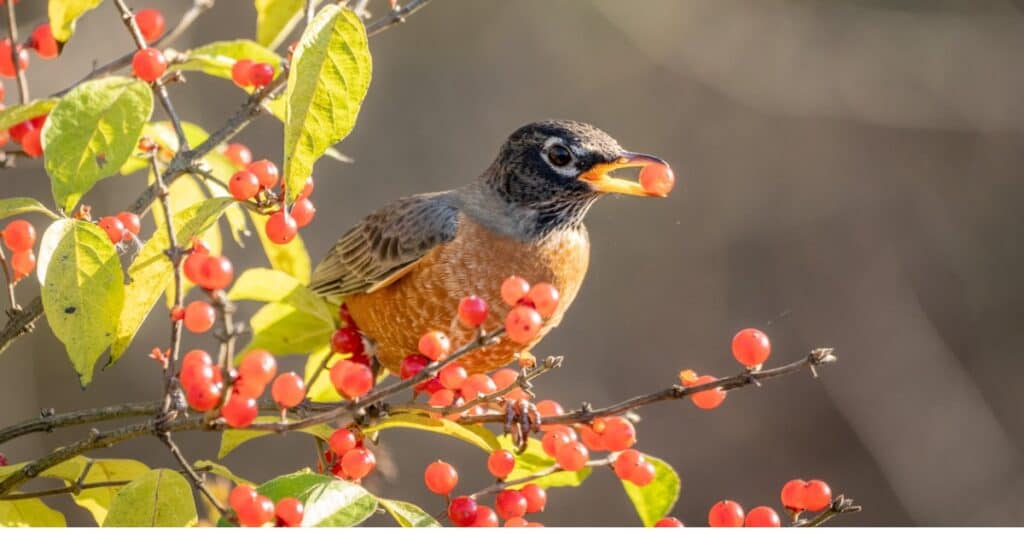
Male American Robins will defend and hunt food while the female protects their offsrping.
©iStock.com/weaver1234
Male vs Female Robin: Size
Robins have an average body length of 25 centimeters and weigh between 2.5 and 3.5 ounces. According to the Environmental Protection Agency, male robins are slightly larger than female robins, which weigh approximately 2.6 grams on average.
Although male robins are generally larger than female robins, some females will outgrow specific males, a female may grow in size while pregnant. Although, her physical components, such as her wings and tail, will remain smaller on average.
Male vs. Female Robin: Colors / Markings
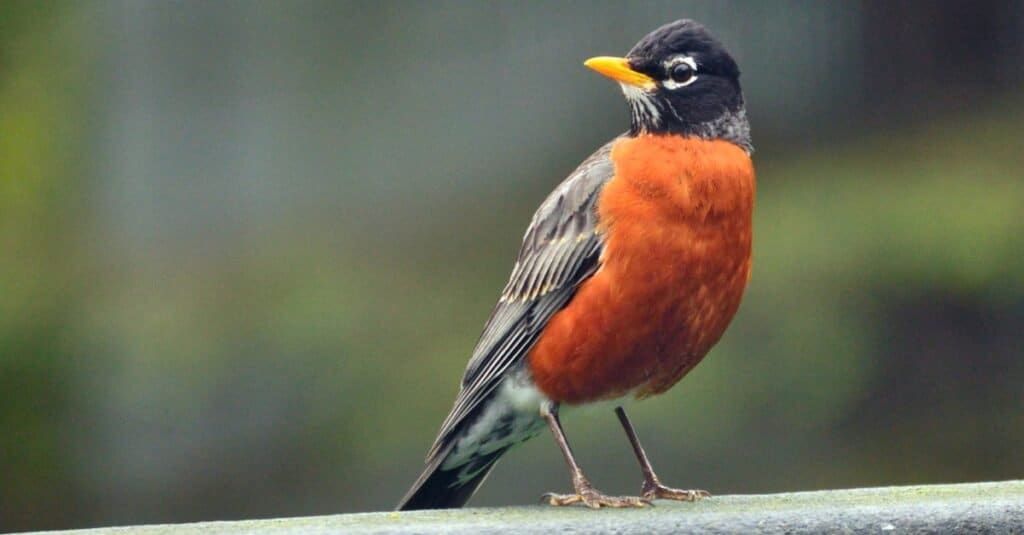
The male American robin is generally the last bird heard singing at sunset.
©iStock.com/PhotosByMSA
Male robins have a more vibrant coloration than female robins. As indicated by his eye-ring, vibrant beak color, black-colored head, and white-collar decorations. Compared to the male’s darker, more vibrant feathers, the female robin will appear dull or faded. Male robins, according to many, can be differentiated from female robins by their rusty red breast, which is deeper than that of female robins. Female breasts will be paler, leaning toward reddish-orange. Why is this? One main reason is female robins must be carefully concealed to avoid predators while incubating their eggs. As a result, females of many bird species are not as colorful as males.
Male robins often have darker black wings and tail feathers, whilst female robins typically have a charcoal-colored plumage. Females have less contrast between their head and back feathers (which are typically a darkish gray color).
Characteristics
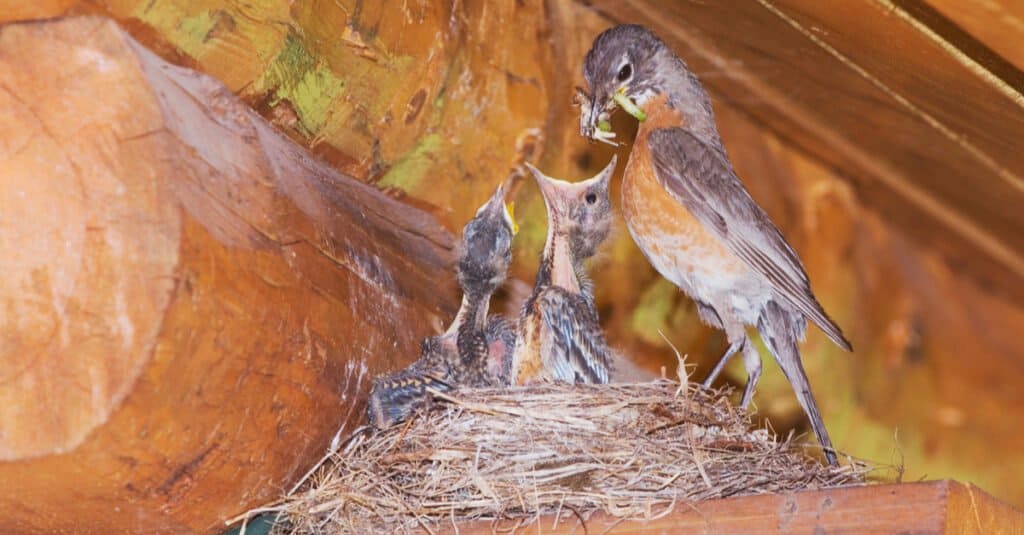
The female Robin feeds and cares for her offspring.
©Danita Delimont/Shutterstock.com
Male vs Female Robin: Temperament and Duties
Despite their innocent appearance, robins can be aggressive. Males are willing to engage in combat and may even kill their rivals, and females will guard their offspring. During mating season, the male’s brilliant breast acts as a warning to unworthy competitors. Due to the very territorial nature of robins, females will only invade a male’s territory during the breeding season. Thus, if two robins are seen together, they are likely a male and a female. Males usually arrive at nesting grounds ahead of females and will sing or fight to defend their territory from competing males.
Males and females form pair connections throughout the breeding season, which runs from April to July when they nurture their offspring. The female robin constructs the nest, which is coated with fine grasses and a center layer of mud. Typically, the nest is built in the crotch of a tree or shrub that is 5-20 feet above the ground.
Although females are generally responsible for nest construction, Male robins contribute to the construction work on a sporadic basis. However, if you can capture a robin in the act of nest construction, you’ve probably identified a female. During their first year, male robins will care for their young at night. The female robins spend this period incubating the second brood but return during the day to feed and care for the hatchlings.
Wrapping Up Male vs Female Robins
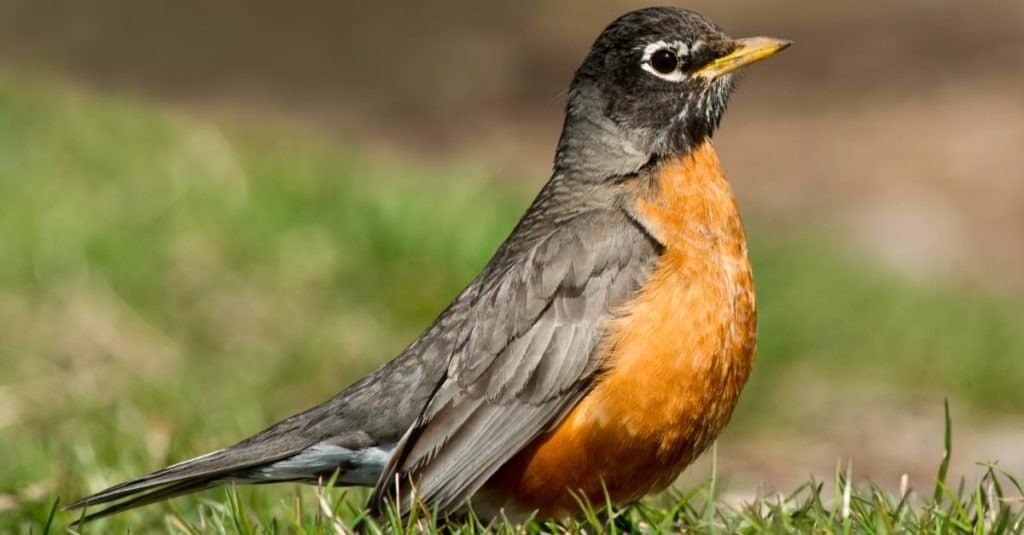
The male Robin has a rusty red chest that is deeper in color than the female.
©Paul Reeves Photography/Shutterstock.com
Apart from their varied mating activities, the most evident contrast between a male and a female robin is their colors. Male robins are more vibrant in color than female robins. Males can be identified by their eye-ring, vivid beak color, black-colored head, and white neck markings. The female’s feathers appear washed out and faded in comparison to the male’s darker, richer colors.
Additionally, it is critical to know that American Robins are unsuitable as pets. As wild birds, they require a large amount of space to exercise and forage. Keeping a robin as a pet is also forbidden in the majority of countries. While some have discovered that it is possible to train robins to feed from your hand, bringing them in from the wild is not recommended.
Why Are Robins Special?

Robins have been venerated in traditional folklore through the ages.
©Bonnie Taylor Barry/Shutterstock.com
Through the ages, the robin has not only been adored by bird watchers and nature enthusiasts, but it has come to symbolize positive elements like happiness, good luck, and rebirth. It has also been viewed as a messenger between humans in the land of the living and loved ones who have passed on.
In Norse mythology, the robin is viewed as a protector from fierce storms. In Celtic traditions, this beautiful bird was heralded as the Oak King of Summer. In both 1960 and 2015, the robin was named the national bird of Great Britain.
Robins also symbolize new beginnings, joy, and strength in marriage in various traditions. Some believe that if a robin appears in one’s view, the spirit of a loved one is watching over you.
The photo featured at the top of this post is © iStock.com/mirceax
Thank you for reading! Have some feedback for us? Contact the AZ Animals editorial team.






